Specialization: facade decoration, interior decoration, construction of summer cottages, garages. The experience of an amateur gardener and gardener. He also has experience in repairing cars and motorcycles. Hobbies: playing guitar and much more, for which there is not enough time :)
If you want to insulate your house, then any specialist will tell you that it is better to do it outside. However, in some cases, it becomes necessary to insulate the walls from the inside, for example, if the facade has already been finished or external insulation is not enough. Therefore, below I will tell you how to insulate a house from the inside, so that this event is effective and at the same time does not lead to mold and destruction of walls.
Features of home insulation from the inside
Many people who have not previously encountered insulation are interested in whether it is generally possible to have insulation on the inner walls? Of course, this is quite permissible, and, if the procedure is performed correctly, then the house will become much more comfortable and economical in terms of heating.
- after installing the insulation, the walls of the building will no longer be heated, as a result of which there is a possibility of cracks;
- condensation occurs under the insulation;
- the useful area of the premises is reduced;
- there is no way to insulate the ceiling, as a result of which a cold bridge remains.
Therefore, this method should be resorted to only in cases where it is really impossible to implement other insulation options. If, despite these disadvantages, you still decide to carry out insulation from the inside, you must strictly adhere to the technology, which we will get acquainted with below, especially with regard to wall insulation.
If you insulate an extension, for example, a veranda, then you can increase the living space of the house. The only thing, before insulating the extension, you need to eliminate the cracks in the windows and doors.
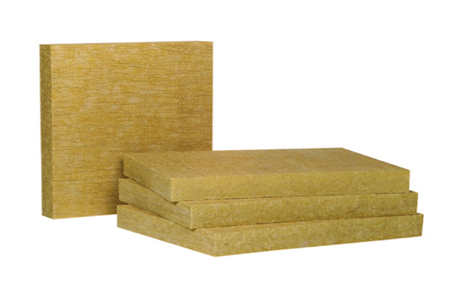
Insulation technology
Materials (edit)
So, if you take on this work yourself, then the first question that arises in front of you is - what is the better to insulate the walls inside. The most common are the following materials:
- mineral mats are an environmentally friendly fireproof material with vapor permeability. The cost of mineral wool is 1500-5000 rubles per cubic meter, depending on the brand and manufacturer;
- expanded polystyrene - has a low weight and costs a little less - its price ranges from 1000-3000 per cubic meter. True, expanded polystyrene is more fire hazardous and does not "breathe", unlike mineral wool, however, with good ventilation, this drawback does not matter.
In a wooden house, of course, it is better to use mineral wool. If the house is brick, you can also perform insulation with foam.
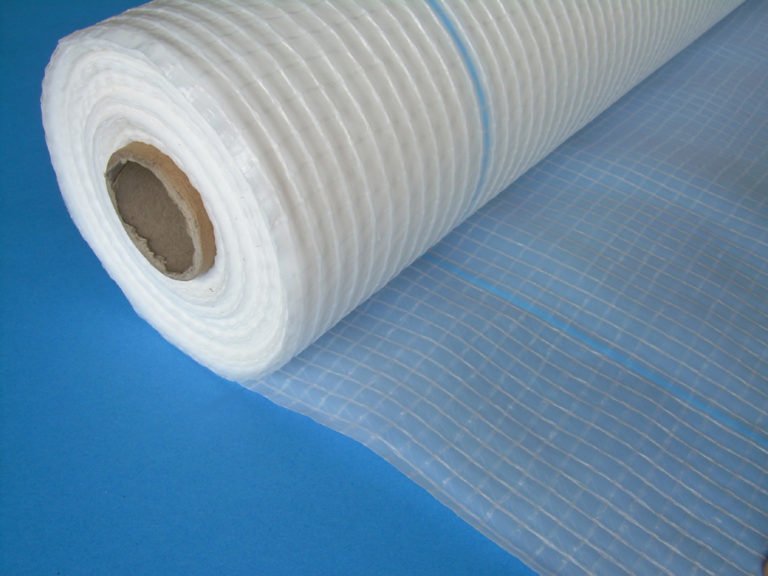
In addition to insulation, you will also need other materials:
- wooden slats with a cross section of about 20x20 mm;
- wooden beams or a profile for mounting drywall;
- adjustable brackets;
- vapor barrier film.
It makes sense to insulate the house not only if you will live in it in the winter. If you insulate the garden house from the inside, then in the summer it will become cooler and more comfortable for relaxation. This is especially true for the thermal insulation of the roof, which heats up under the sun during the day.
Floor insulation
It is necessary to carry out insulation from the inside of the house in a comprehensive manner, i.e. in addition to the walls, the floor and ceiling should also be insulated. Therefore, first of all, I will tell you how to carry out this procedure with the floor.
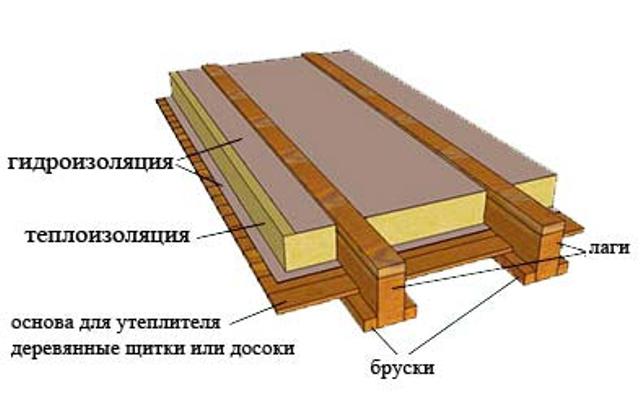
If the floor is wooden, the instructions for insulating it are simple:
- first of all, you need to dismantle the floor and place bars with a section of about 15x15 mm near the log;
- then the base is laid on the bars. For this, you can use thin boards, and they do not have to be fixed to the bars;
- then the resulting shields should be covered with a waterproofing film, which should be laid directly on top of the log. At the joints of the canvases, it is necessary to provide an overlap of about 10 cm;
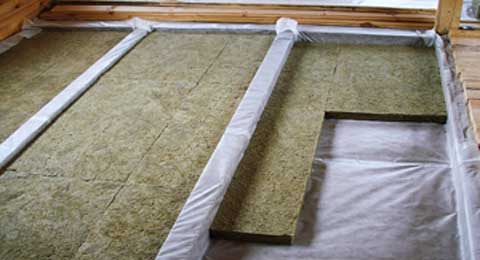
- after that, a heater is laid on the film, which should fit snugly to the lags, without leaving any gaps. I must say that not only foam or glass wool can be used as a heater, but also bulk materials, for example, expanded clay, ecowool or even sawdust;
- a waterproofing film is laid on top of the insulation. It also needs to be overlapped, and it is advisable to glue the joints with tape;
- after that, you can lay the boards on top of the log or other rough material.
To insulate a wooden floor, you can also use a natural material - reeds. To carry out insulation with reeds with your own hands, you need to stock up on them with the onset of the first frost. The stems should be well dried before use.
If the floor is concrete, you can make a dry screed with your own hands. To do this, follow these steps:
- first of all, a waterproofing film is laid;
- then beacons are installed to level the surface dry. As beacons, special aluminum profiles are used, which are laid on lumps of cement. To install beacons, you must use a level so that they are located in the same horizontal plane;
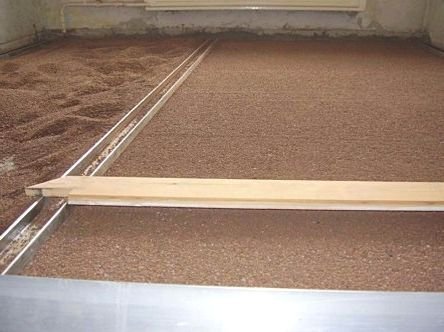
- a damper tape is laid around the perimeter of the room, which prevents floor creaks and other unpleasant moments;
- after that, expanded clay is poured into the space between the lighthouses and leveled with a rule or just a board along the lighthouses;
- on top of expanded clay, sheets of plywood, chipboard or drywall are laid, on which the finishing flooring is subsequently laid.
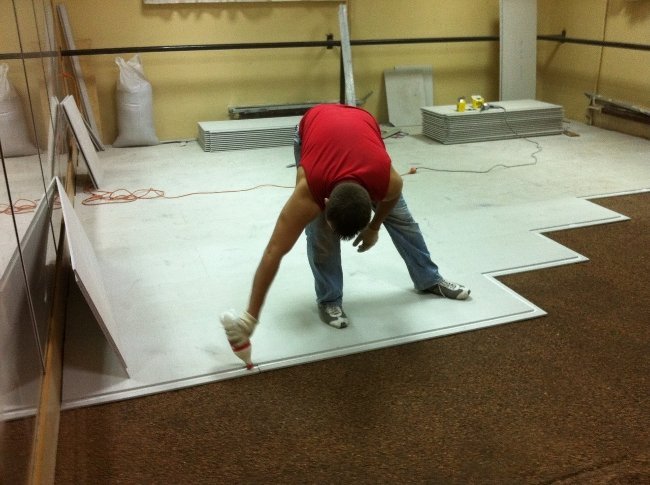
Another technology for insulating the floor is to pour the screed directly onto the mineral mats. This is done as follows:
- the base is waterproofed with a film;
- then mineral mats are laid;
- then waterproofing is spread over the mats;
- beacons are mounted on top of the waterproofing and a screed is poured. At the same time, it is advisable to use fiber for reinforcement, and not a metal mesh, so as not to damage the waterproofing film.
On our portal you can find more detailed information on how to install beacons and fill the screed.
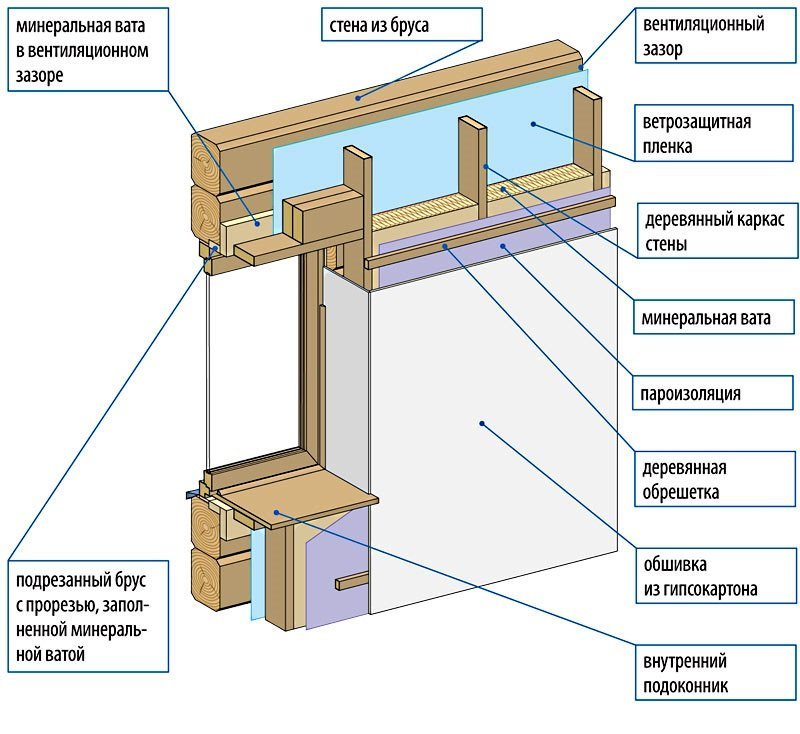
Wall insulation
Carrying out insulation inside the house, special attention must be paid to the thermal insulation of the walls, since the effectiveness of this event largely depends on them. The process of wall insulation is as follows:
- first of all, it is necessary to fix the slats with a section of 20x20 mm on the wall. Most often, the slats are placed horizontally with a step of a meter and a half. To fasten the rails, you can use the dowel-nails;
- then the film is stretched over the slats. I note that it must be exactly stretched so that a ventilation gap forms between the wall and the insulation. The latter is necessary to remove condensate, which will necessarily form in the winter.
You can use a construction stapler to fix the film; - further, vertical racks should be attached to the horizontal rails, between which the insulation will be located. The most difficult thing at this stage is to correctly install the racks so that they are located strictly vertically and in the same plane. It depends on how smooth the walls turn out to be.
The step of the racks is the width of the insulation. Moreover, the latter should go tight so that it does not need to be additionally fixed;

- after installing the frame, you need to fill the space between the racks with insulation from the floor to the ceiling;
- after filling the frame with insulation, another layer of vapor barrier film should be fixed on it;
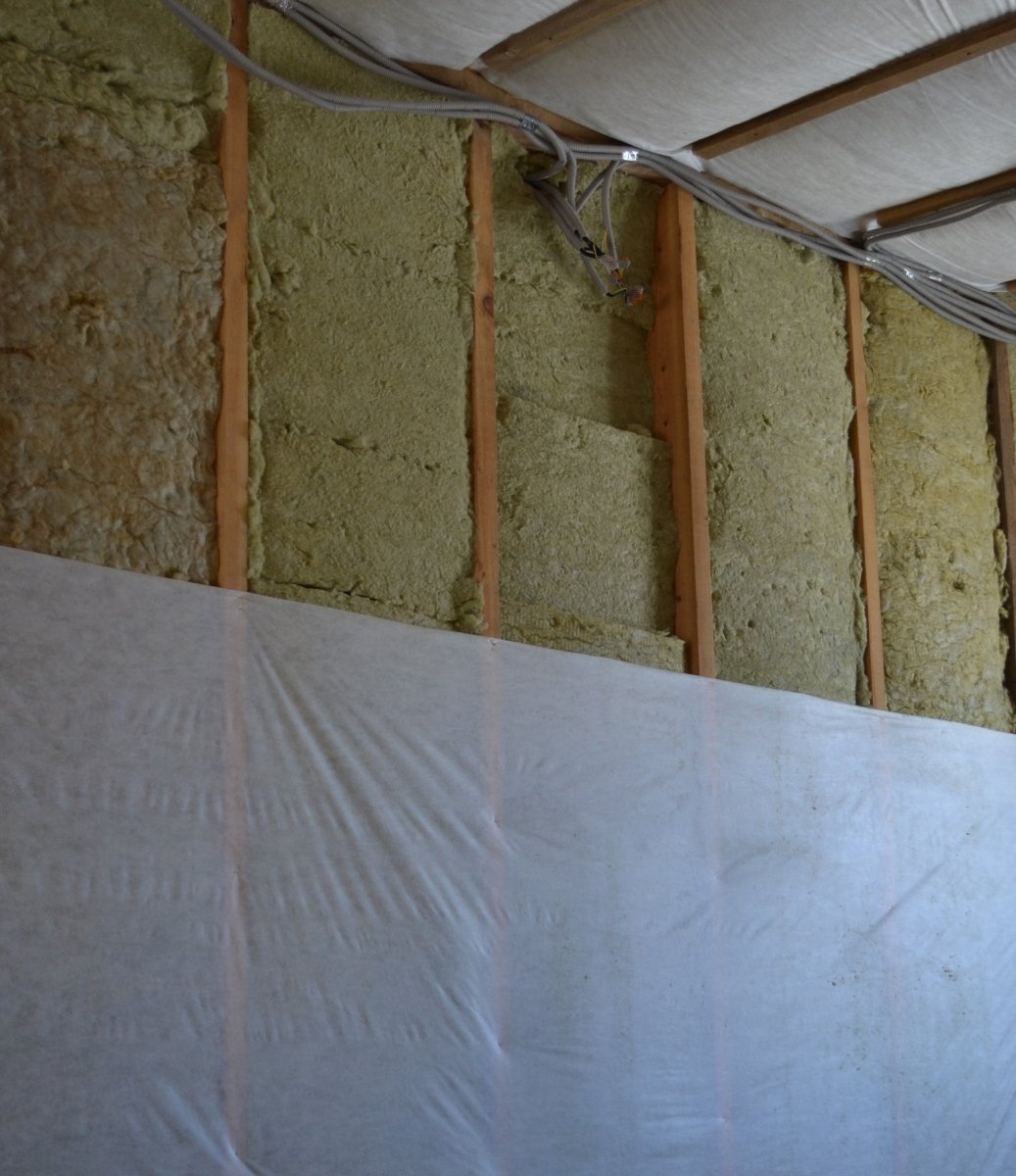
- at the end of the work, a finishing material is attached to the frame. If you are insulating a suburban wooden house, you can sheathe the walls. If you want to glue the wallpaper or use other finishing materials, you should use drywall.
If the house is built from KBB, aerated concrete or other material that does not hold ordinary dowel-nails, you should use special “butterfly” dowels or chemical fasteners.
Here, in fact, are all the nuances of wall insulation. However, the insulation of the house has not yet been completed.
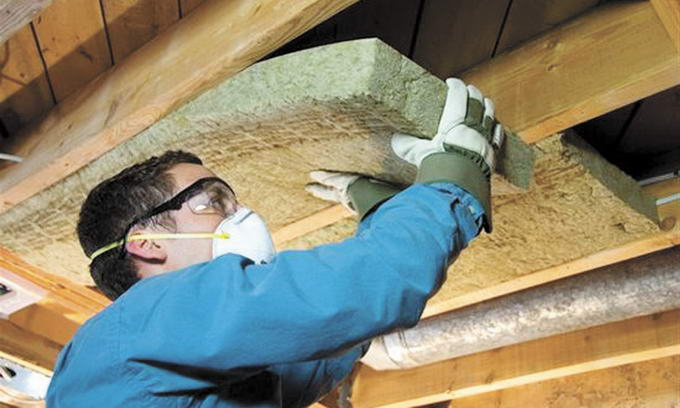
Insulation of the attic
Finally, I will tell you how to properly insulate the attic. This procedure resembles floor insulation, however, there are some nuances.
I must say that ceiling insulation can be realized both from the inside with your own hands and from the side of the attic. From the inside, the work is done as follows:
- you need to start work by attaching the vapor barrier film to the floor beams and the attic flooring;
- then insulation is placed in the space between the beams and fixed with slats;
- another layer of vapor barrier is attached to the bottom of the beams using a construction stapler;
- at the end of the work, the ceiling is hemmed with plasterboard or other material.
The attic is insulated according to the same principle.
I must say that it is very difficult to insulate the ceiling from the inside alone with your own hands. Therefore, to perform this operation, it is better to call an assistant.
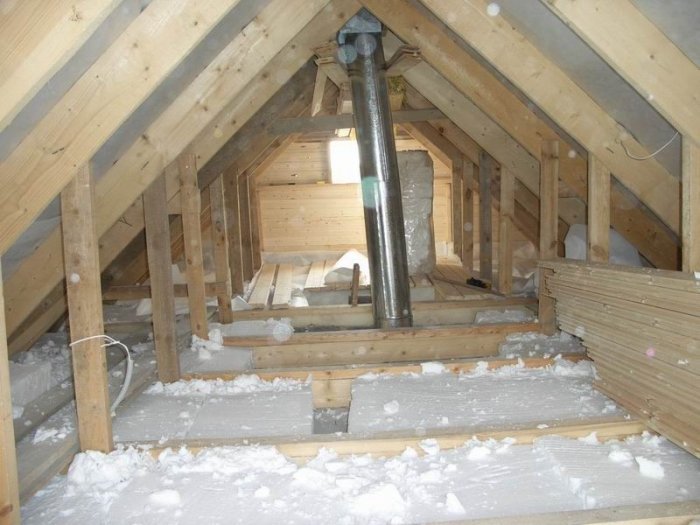
Insulation of the attic from the outside is carried out according to the same scheme as the insulation of the floor. In particular, you can use bulk thermal insulation materials, which are mentioned above.
The heat insulator can also be placed between the floor beams if the house is two-story. This will provide sound insulation.
Here, in fact, are all the main nuances regarding the insulation of the house from the inside. Finally, I note that in order to achieve the maximum effect from insulation, you need to pay attention to windows and doors. If they are poorly sealed, a large amount of heat will go through the cracks, which can be seen if you look at the house through a thermal imager.
Output
Thermal insulation of a house from the inside, although it contains a number of disadvantages, nevertheless, makes housing much more comfortable and economical. Moreover, if you do the work yourself, which, as we found out, is quite easy, then this will not entail large financial costs. The only thing, as mentioned above, is to adhere to the technology and perform the thermal insulation carefully, without leaving cold bridges.
The video in this article contains more information. If some points are not completely clear to you or there are difficulties in the process of home insulation, leave questions in the comments, and I will be happy to answer you.
September 7, 2016If you want to express gratitude, add clarification or objection, ask the author something - add a comment or say thank you!



